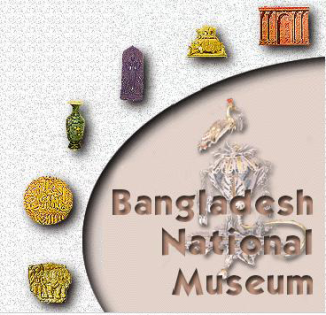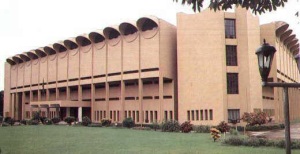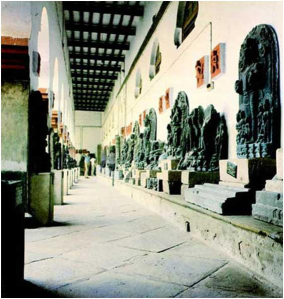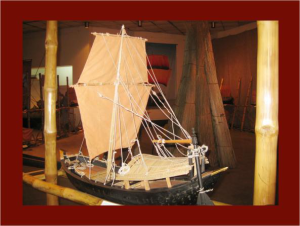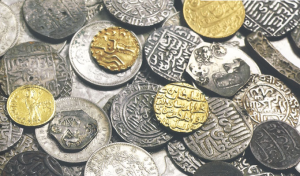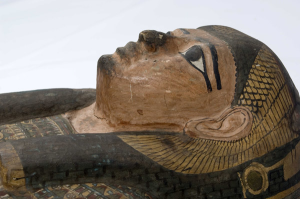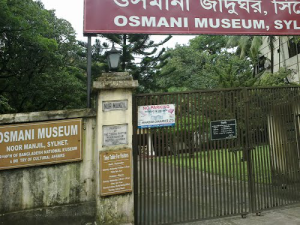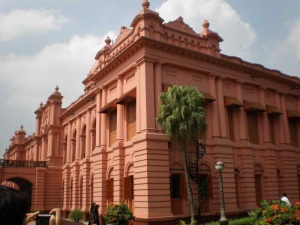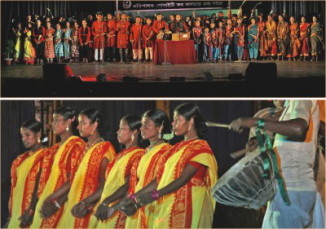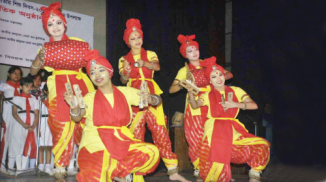There are about 150 museums in Bangladesh. Each of them has its distinctive features amongst which Bangladesh National Museum is the most famous and the largest museum in south Asia. It is the successor to the Dhaka Museum established in 1913. In 1983 the government through an Ordinance converted the Dhaka Museum into the Bangladesh National Museum which is now run by the ministry of Cultural affairs and a board of trustees. The Bangladesh national Museum is a multi-disciplinary one, situated at Shahbag, the heart of the city of Dhaka. It has a collection of over 86,000 objects in its four curatorial departments. The museum displays its objects in 44 galleries (including 4 for the Great Liberation War artifacts) within a floor space of nearly 20,000 square meters.
The Museum’s curatorial departments are:
(a) The Department of History and Classical Art with little over 67,000 objects. The objects are of different periods beginning from Palaeolithic Age (Stone Axe), 1000 BC (Iron Axe) and 4-5th century BC (Punch Mark Coin)
(b) The Department of Ethnography and Decorative Art with little over 11,700 objects mostly with art crafts beginning from 18th century
(c) The Department of Natural History with 2,300 objects relating to geology, zoology and botanical objects and specimens
(d) The Department of Contemporary Arts and World Civilisation with about 5,000 objects. Under this Department there are seven galleries and four corners named as Shilpacharya Zainul Abedin Gallery, Contemporary ArtGallery-1, Contemporary Art Gallery-2, Portraits of National Heroes, World Civilisation, Western Art, and Portraits of World Intellectuals
The National Museum also has two service departments namely Conservation Laboratory and the Public Education.
The Bangladesh National Museum has a large collection of ancient and medieval stone sculptures, architectural pieces and inscriptions, terracotta plaques, bronze, earthen and brass images and vases, gold and silver ornaments, coins, copper plates, arms and weapons, wooden sculptures, musical instruments, textiles, paintings, ivory object, porcelain and glass items, dolls, tribal aesthetic objects, manuscripts and documents. There are also galleries for ethnographic objects, folk art, and boats of Bangladesh, embroidered quilts, potteries and specimens relating to natural history. The museum maintains a proud collection of Language Movement and the Liberation War remembrances.
There are four branch museums under the administrative control and management of Bangladesh National Museum. These are Zia Smriti Museum in Chittagong (1993), Ahsan Manzil Museum in Dhaka (1992), Osmani Museum in Sylhet (1987) and Shilpacharya Zainul Abedin Sangrahasala in Mymensingh (1975). Bangladesh National Museum frequently helps all other museums, private or public, with expertise and other supports as and when requested for.
It is worth mentioning that the Bangladesh National Museum has been able to create a neutral ground of gathering for the community people. The museum houses three auditoriums and two temporary exhibition halls. Various cultural programmes and activities such as music, dance, recital, drama, magic shows, fashion shows, conferences, discussions, seminars, exhibition of paintings, calligraphy, and sculpture are being held round the year. It also plays a pioneer role in children’s education programme by organising handwriting competition, painting competition, and exhibition of their creative works. The museum also arranges weekly documentary film shows, guide lecture service for museum visitors, school bus service, besides there being a good reference library for study and research. Special service for senior citizens and handicapped visitors is also provided by the museum.
The Bangladesh National Museum publishes a good number of research books, journals, newsletters, catalogues and periodicals. Museum publications, CD etc related to the museum and view cards are available in the sale centre at a cheap price. The National Museum has thus been fulfilling the expectations of the nation to a large extent by being responsive to the needs and aspirations of the community. Likewise, it is aware of the needs of the foreign friends who do often come to visit the National Museum. The Bangladesh National Museum does not make any difference in charging entry fee, which is Tk 10 only, for visitors both from home and abroad. Every special exhibition on art arranged by the museum is always free of charge for all visitors. The museum welcomes visitors to meet the glorious heritage. 